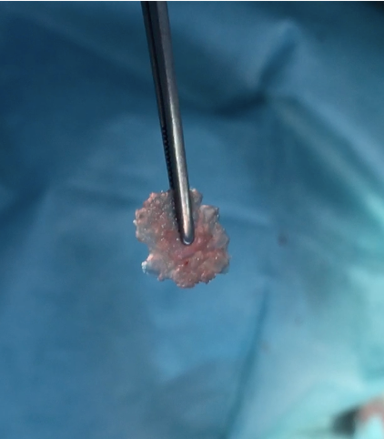Cartilage transplantation during nose surgery
Cartilage grafts with PRF
(PRF Platelet rich fibrin - highly concentrated fibrin and growth factors)
A graft is necessary in some nasal surgeries to compensate for irregularities or fill volume defects. We exclusively use autologous transplants in our practice, as no foreign body reaction is to be expected.

The use of autologous transplants
We use cartilage scales or finely chopped cartilage bound with highly concentrated fibrin and growth factors (= PRF) from the patient's blood for grafts that are intended to camouflage minor irregularities or compensate for volume loss on the nasal bridge.
Blood is obtained from the foot during the operation and processed in a special centrifuge. Fibrin is a clotting protein which is produced naturally in the body. In this case, it binds the cartilage components and at the same time leads to improved survivability of the graft due to the high concentration of growth factors. These attributes have been confirmed in several international studies.
By means of this technique, the patient receives a body-own graft that fits exactly to the surface of the nasal bridge and does not have any visible edges. Even major defects on the nasal bridge can be filled in this way.
Fat and PRF
Patients with very thin skin may experience more scarring in the course of the healing process, with displacements especially in the cartilaginous area.
In order to avoid this, it is possible to build up and increase the fat layer under the skin on the nasal bridge by means of fat tissue from the navel area and PRF.
The scar-induced shrinkage of the skin can be avoided and the skin quality can be significantly improved - even in patients who have already undergone surgery.
Both grafts have been developed in our clinic and have been used by colleagues around the world for years.

